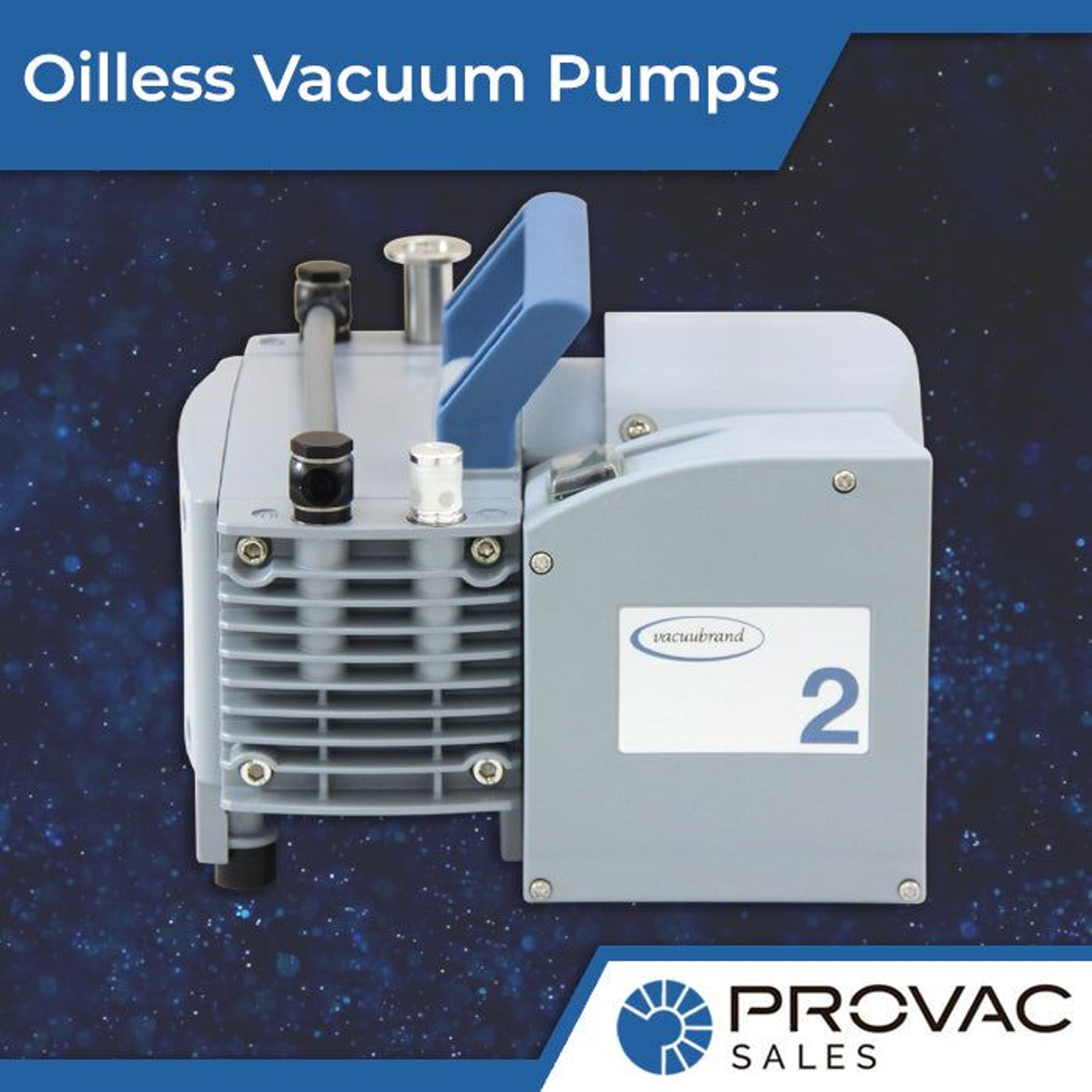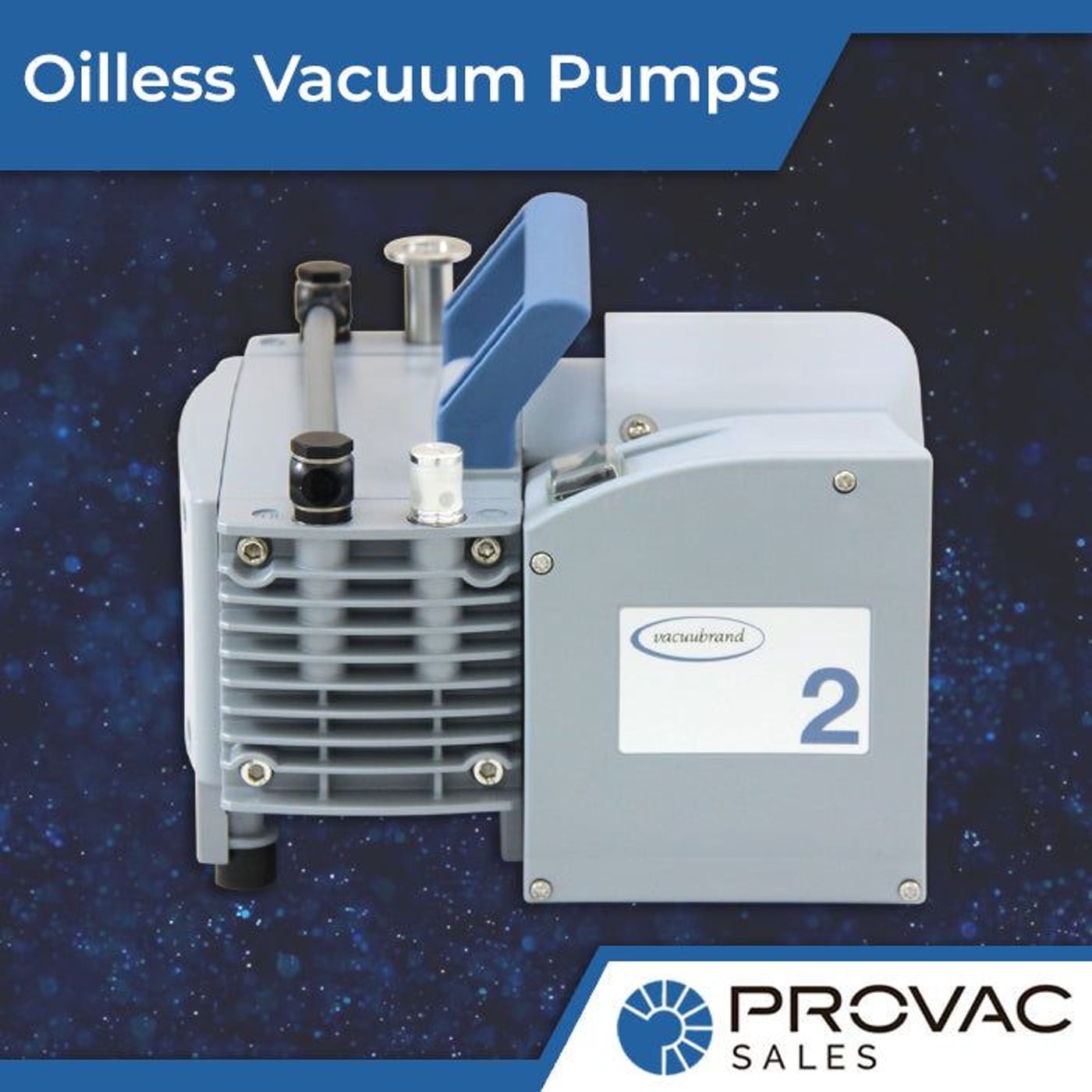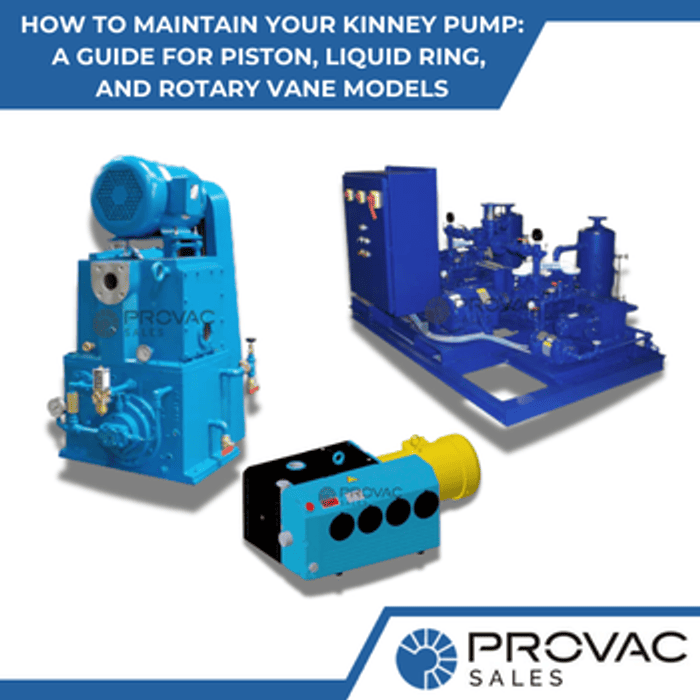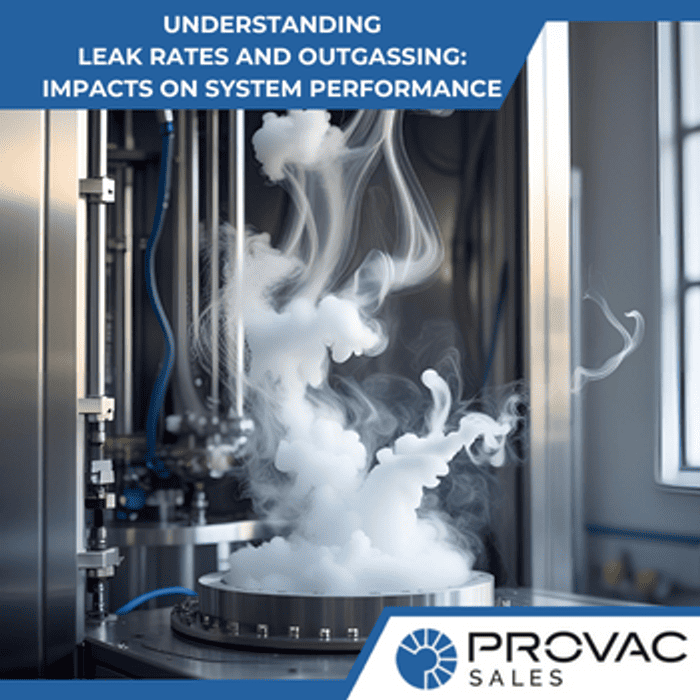Previous generations of vacuum pumps utilized oil for lubrication and as a sealant to create a vacuum. Although oil-sealed piston and vane pumps are a reliable technology that create deep ultimate vacuum, the new trend in vacuum is to go dry. The reason behind this is to avoid the downfalls of oil-filled pumps, such as the creation of oil mist, back migration, and maintenance issues. In some cases, inlet traps and oil mist eliminators are used to prevent these challenges, but these can also lead to additional cleaning and maintenance.
An oilless vacuum pump, however, does not use any kind of oil as a part of the vacuum-mechanism, but instead, uses fluids or oils to lubricate gears or bearing chambers. The lack of fluid in the vacuum chamber allows for less ongoing maintenance, as well as for a theoretically cleaner working environment. Booster pumps can be used in conjunction with dry pumps, just as they are used with oil-sealed pumps in order to achieve wider vacuum ranges and higher capacities.
Applications of Oilless Vacuum Pump
There are many different designs for dry pumps, including diaphragm, scroll, rotary lobe, rotary screw, and hook and claw. Each of these pumps have their own advantages and are used for different purposes. These pumps are utilized in a wide variety of industries for various applications, including molding machines, drying processes, central vacuum supply systems, pneumatic conveyors, packaging lines, and clamping systems for CNC machines.
These pumps are ideal for applications where the use of water or oil is prohibited, such as robotics, vacuum chucking, air sampling, graphic arts, medical and surgical uses, as well as material handling.
Benefits of Oilless Vacuum Pump
Since an oilless vacuum pump does not require rotors coming in contact with each other or the pump chamber, there is almost no wear and tear. That is why these pumps require minimal maintenance, especially compared to the oil-filled vacuum pumps.
Environmentally Friendly
Oilless pumps are also environmentally friendly, since no special oil, traps, or oil filtration accessories are required.
More Efficient and Versatile
An oil-filled vacuum pump typically requires the use of traps, which require a lot of attention and maintenance, leading to speed losses. On the other hand, oil-free vacuum pumps are capable of delivering full pumping speed without any breaks, at all times.
Oilless pumps tend to be more portable, compact, and lightweight when compared to their oil-filled counterparts. They are also more flexible, as they can be used for pumping a variety of materials, including hydrogen, helium, solvents, and water vapor. They can also operate in any orientation, including sideways, or even upside down.
Dry vacuum pumps run hot due to a lack of any liquids for heat removal. Usually, a cooling jacket is employed for regulating the internal temperature to prevent excessive thermal growth. The clean purge gas is required on some dry pumps to use to purge the module of contaminants and aid pumping flow.
Hassle-free Operation
Oil-filled pumps require a lot of maintenance and attention, including oil changes at regular intervals. On the other hand, oilless vacuum pumps are virtually maintenance-free and much easier to repair.
How to Buy the Right Oilless Vacuum Pump?
When it comes to buying the best pump for your needs, it is important to pay attention to several things, including design. Diaphragm pumps and scroll pumps are both popular oilless options with their own range of advantages. Diaphragm pumps are the most chemical and corrosion-resistant type of pump, but the major disadvantage is that they do not offer a high depth of vacuum. On the other hand, scroll pumps tend to be more expensive, but they have a high depth of vacuum.
Overall, an oilless vacuum pump offers a number of benefits over oil-filled vacuum pumps. The demand for oilless vacuum pumps is growing, due to increasing awareness of the various advantages they offer. It is recommended to get in touch with an expert to discuss your requirements and specifications in order to choose the right oilless vacuum pump for a specific application.





